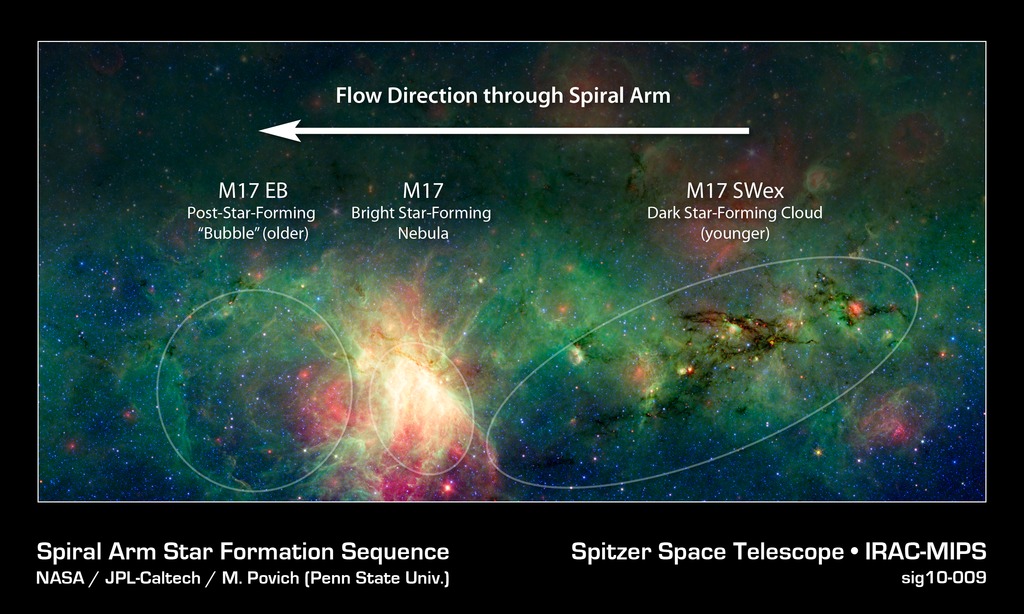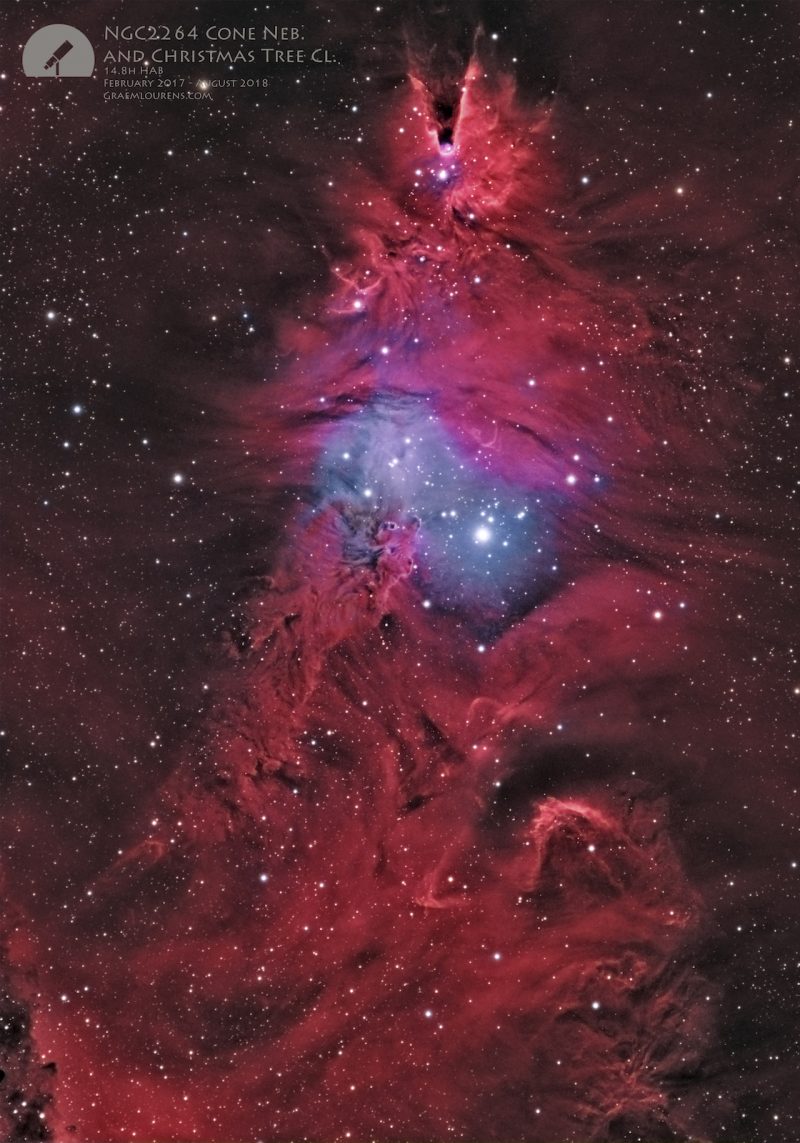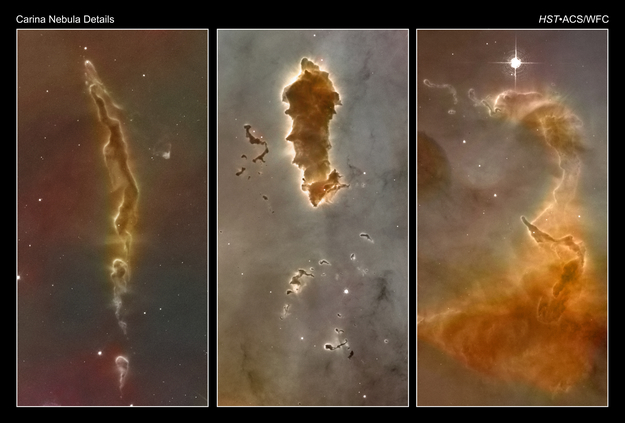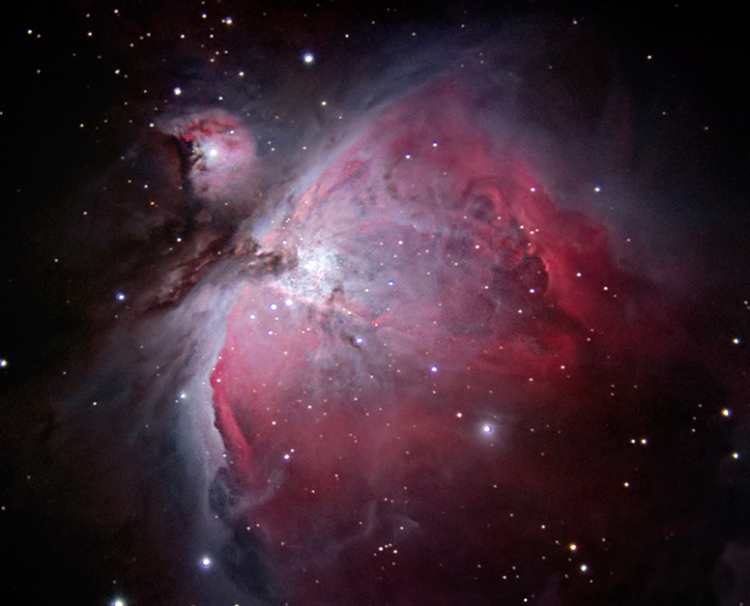Star-Forming Eagle Nebula without Stars
Image Credit & Copyright: Yannick Akar
I was wondering why today's APOD was showing us so much stuff "below" the Eagle Nebula. But when you look closely, you can see that there are gigantic "fronts" or "arcs" or "waves" in the molecular gas associated with the Eagle Nebula which seem to be the remnants of large outbursts of some sort from the massive cluster at the center of the nebula, or from the convulsions of star birth.
If you look at the picture that I have annotated, you can see that there is a bright blue star "above" one of the most obvious large waves (at lower left). I was wondering if that star had something to do with the shaping of the arc. Not so, however. The star, HD 167812, is a modest very late B-type star (B9.5V) which is quite similar to Sirius, and it is incapable of causing any light-year-long shock fronts in space.
What we are seeing is the convulsions of the interstellar medium (or in this case, the convulsions of a part of a molecular cloud) because of massive star formation going on in another part of the cloud. Such fronts and such compression could presumably lead to new star formation.
The Omega Nebula, M17, is located very close to M16, the Eagle Nebula, and my amateur guess is that these two nebulas might be, if not siblings, at least second cousins ultimately emanating from the same general molecular cloud. In M17, we see a very interesting case of triggered multi-generation star formation:
The gas around M17 is being recycled into new generations of stars. The same thing is probably happening in M16, too, although the "arcs" or "fronts" seen in the APOD may be too "mild" to compress the gas enough to trigger new star formation. More likely, the new star formation in M16 is happening where the gas and dust is more thick and dark.
Anyway. Speaking about arcs and waves in nebulas and molecular clouds. NGC 2264, the Cone Nebula and Christmas Tree Cluster, is one of my favorite regions for looking at billowing waves as a consequence of the lighting of furiously massive stars. Thar she blows,
S Mon(ocerotis) - and she blows, and blows, and blows, and blows, and....
Until she really blows, as a supernova. But she won't do that yet, not for a couple of million years. Until then, she just blows, and she makes mighty waves in her sea of gas.
Ann
 Star-Forming Eagle Nebula without Stars
Star-Forming Eagle Nebula without Stars









